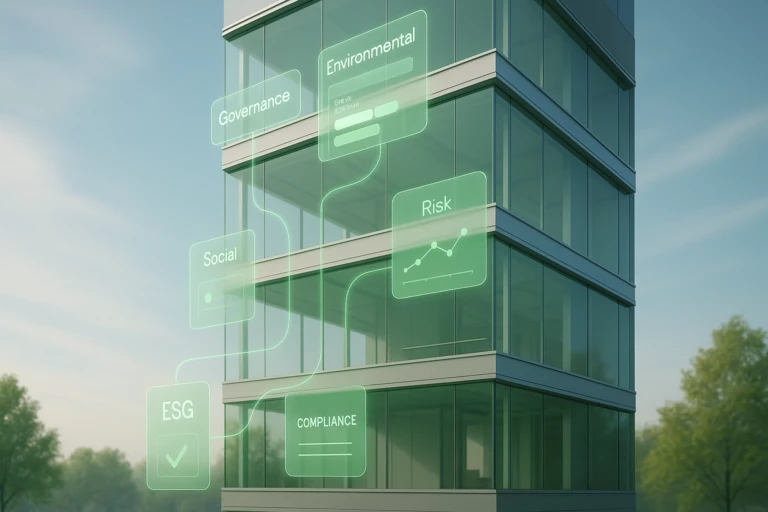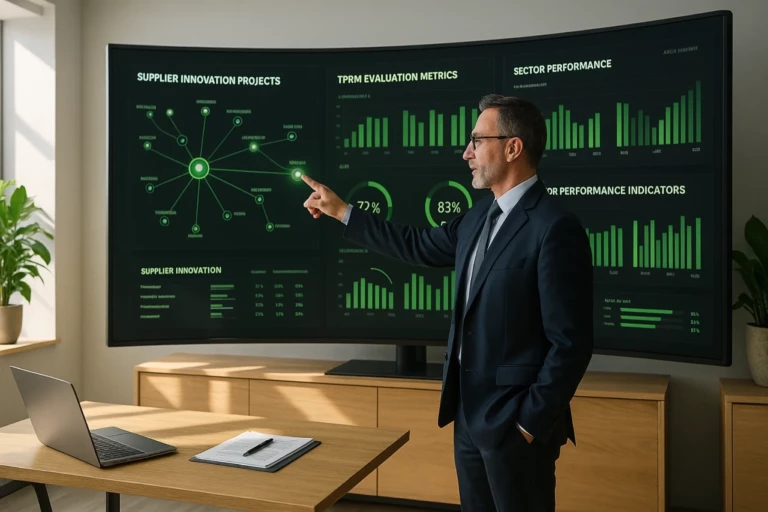How to Identify Risks Across Your Entire Supply Chain
As supply chains grow more complex and geographically dispersed, companies can no longer afford to assess only their direct suppliers. Major risks—whether related to cybersecurity, corruption, or production continuity—can emerge much deeper in the chain. A single raw material supplier at tier 8 can jeopardize an entire production line. This is why expanding risk assessments […]
Reducing Supplier Fatigue with AI: How TPRM Solutions Simplify Life for Suppliers and Buyers
In many industries, document submission remains a time-consuming task for subcontractors, especially SMEs. Insurance certificates, legal documents, compliance records… these must be provided regularly, often via complex, paid platformsor manual processes that consume time and energy. The result: growing supplier fatigue, fueled by redundant requests, unintuitive interfaces, and a lack of automation. A Key Issue for Buyers […]
Reindustrialization: Why Mastering Third Parties Is Now a Strategic Imperative
France’s reindustrialization is underway. Driven by the ambitions of the France 2030 plan, the ecological transition, and economic sovereignty challenges, it’s about much more than simply bringing factories back onto national soil. It requires a deep rethink of sourcing, evaluation, and supplier management processes. Restoring independence and economic sovereignty has become a major strategic issue […]
TPRM & Innovation: How Procurement Departments Are Becoming Catalysts for Product Performance
Innovation is no longer a luxury. For industries such as manufacturing, construction, luxury goods, or retail, it is a strategic necessity — essential for differentiation, regulatory compliance, and staying competitive in increasingly volatile markets. As products become more complex and development cycles accelerate, Procurement Departments are being called to the forefront. Their mission goes far […]
Cyber Risk Among Suppliers: A Strategic Priority for Procurement Teams
As a single cyberattack can now paralyze an entire production line, identifying cyber vulnerabilities within your supplier network is no longer optional. It has become a strategic lever, at the intersection of business continuity, compliance, and operational resilience. Data That Speaks for Itself Between 2021 and 2023, business disruptions caused by cyberattacks targeting suppliers surged […]
How to Select Priority KPIs or KRIs for Third-Party Monitoring
In third-party governance, tracking key performance indicators (KPIs) has become a central component in meeting rising expectations for operational resilience. Operations managers and compliance officers now expect dynamic dashboards that clearly rank the risks associated with each third-party partner while taking into account industry specifics and risk profiles. According to a Grant Thornton study, only 45% […]
Scope 3 Data Collection Methodology: Structuring Third-Party Governance for CSRD Compliance
The transition toward robust environmental reporting, particularly under the CSRD framework, requires both public and private organizations to thoroughly evaluate their indirect emissions, also known as Scope 3. This obligation goes far beyond regulatory compliance. In public housing, government procurement, industrial or retail sectors, the ability to structure solid third-party governance is now critical to the overall performance of an […]
Real-Time Monitoring: How to Revolutionize Third-Party Governance?
Maintaining reliable application performance and monitoring the supplier ecosystem are now core organizational priorities. CIOs and CFOs increasingly scrutinize the ROI of continuous monitoring, especially when outages can cost hundreds of thousands of euros within hours. With regulatory changes like DORA, NIS 2, and CSRD, a proactive approach rooted in real-time tracking is no longer optional—it’s redefining traditional […]
Supplier Evaluation Journey: Optimizing Multi-Regulatory Data Collection
The complexity of third-party evaluation is intensifying as regulatory requirements multiply. This reality calls for a reform of internal processes and the adoption of collaborative workflows that are essential to ensure compliance while strengthening operational resilience. Optimizing the evaluation journey involves a structured methodology that streamlines document collection, improves supplier quality, and significantly reduces “supplier fatigue.” This context calls for a […]








